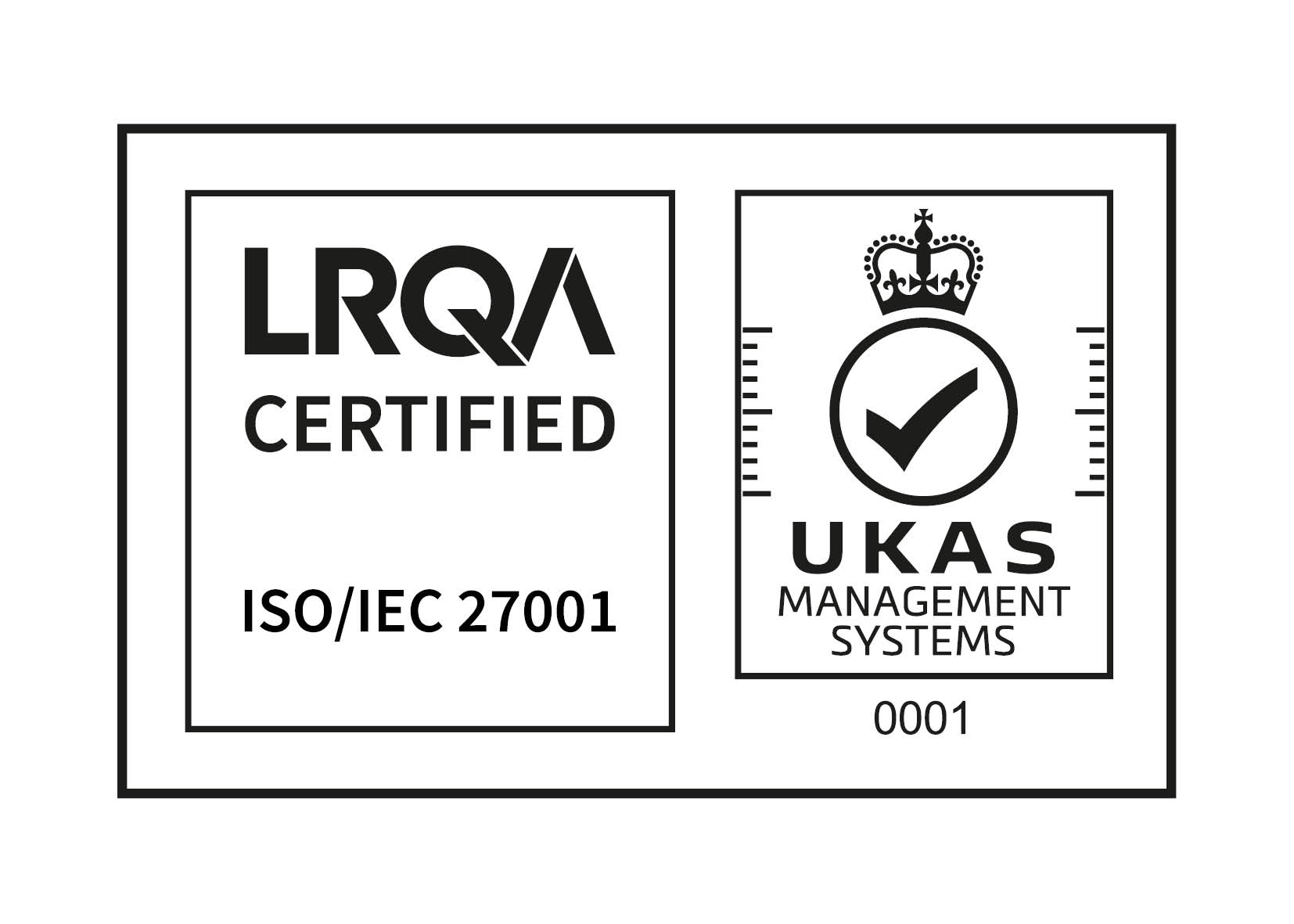Share this
What Does An “Industry-Leading” Complaint Handling Process Look Like?
by Lynne Campbell on October 9, 2023
Building an effective complaint handling process isn’t easy. Fragmented IT systems, complex (and increasingly-varied) comms channels, and a real lack of top-down visibility can make it incredibly difficult for modern organisations.

But there is a way to navigate the inherent complexities of twenty-first century complaint handling – and build a robust process that supports your organisation’s growth.
In an earlier guide to complaint tracking best practices, we analysed eight procedures and four best-practice guides to help you start building a blueprint for success.
This time, we wanted to hone in on a specific complaint handling model – documented by the Scottish Public Service Ombudsman (SPSO). We think this model is a prime example of best practice for complaints management; it’s robust and well-reasoned, based on sound principles and detailed enough to ensure a consistent level of service.

More importantly, it’s sector-agnostic and easy to adapt. The SPSO provides pre-built variations for educational institutions, social landlords, local authorities, health services and social care organisations; we think the model is also eminently suitable for a wide variety of other public and private sector companies.
By drilling down and analysing the best attributes of these models, we can start to refine our blueprint; building a process that:
• Makes it easy for front-line staff to improve customer satisfaction
• Enables managers to track and analyse the data needed to spot systemic failings
• Drive continuous and sustained improvement across products and services ensures full compliance with all relevant complaint handling regulations.
Note: While we think highly of the SPSO’s complaints handling procedures, we are aware that they’re not a panacea and may need some modification – particularly if you operate in an industry with stringent complaints handling standards.
While best practices are fairly universal, if you work in a heavily regulated sector, there may be specific requirements that you’ll need to adhere to when establishing your own process.
Some best practice procedures which we would also recommend referencing are set out by the Housing Ombudsman Service and the Local Government and Social Care Ombudsman.
What Can We Learn From The SPSO’s Model Complaint Handling Process
Before we dive in, take a look at the SPSO’s model complaint handling procedures. You don’t have to get too in-depth: We’ve outlined the main benefits below, and gone into some detail about why we think various factors are important.

But some familiarity with their approach will help to contextualise our analysis and once you’re up to speed, we can start looking at its key benefits. As follows:
Set Out Clear Definitions
It may sound self-explanatory, but it’s worth weighing in on the importance of definitions here.
A Financial Conduct Authority (FCA) review of complaint handling processes in the financial sector flagged the problems caused by “inconsistencies in the way that firms defined complaints”. They pointed out that these inconsistencies had a tremendous impact on the way data was recorded, and the way that various customers were treated by regulated organisations.
Someone complaining about poor customer service on social media might be referred to a given company’s social media team, who’d use a totally different complaints resolution process to the firm’s official (and documented) one.

Meanwhile, someone who wrote in to report a fault might be embroiled in a more formal process than strictly necessary, simply because the receiving organisation had decided to adopt a very broad definition of “complaint”.
In a rapidly-evolving environment where an increasingly-large number of complaints are made on LinkedIn or Instagram, Google Reviews or via Facebook comments, it helps to have a clear and precise definition.
Clear and precise definitions are also very helpful when trying to help a multiplicity of departments (with differing levels of training) deliver a fairly uniform service that reflects well on your brand.
Luckily, the SPSO’s definition of complaint really couldn’t be clearer. They say that a complaint is:
“an expression of dissatisfaction by one or more members of the public about [the organisation’s] action or lack of action, or about the standard of service provided by or on behalf of [the organisation]”
Critically, they also point out that a complaint is not:
• a routine first-time request for a service
• a first-time report of a fault (for example, potholes or street lighting)
• a request for compensation only
• issues that are in court or have already been heard by a court or a tribunal
• disagreement with a decision where there is a statutory procedure for challenging that decision (such as for freedom of information and subject access requests).
In our eyes, adopting this definition - and making it the foundation of your process - is a positive first step. You’ll be on the right side of most regulatory definitions of a complaint and you’ll set yourself up to deliver a good level of service to the people who need it most.
Instate Reasonable Timelines
Studies show that outcomes are (significantly) better when complaints are acknowledged in a timely fashion. PwC’s guide to turning complaints into a competitive advantage reports that you have about two weeks to respond to a complaint if you want to maintain a customer’s advocacy.
Studies reported in the Harvard Business Review also show that people like to see their complaint being escalated in a timely fashion and report significantly better outcomes when your complaints process is both transparent and speedy.

But setting unrealistic timelines puts unnecessary pressure on frontline workers - and increases the likelihood that your complaint handling process will deliver inconsistent outcomes. This, more than anything else, is something that you want to avoid.
Inconsistent outcomes will result in confused feedback, making it very difficult to measure the true effectiveness of your process or implement improvement initiatives.
You won’t be able to tell whether complaints are (generally) picked up in good time or acknowledged in a timely fashion. Reporting will lack clarity and you’ll open yourself up to criticism from regulators.
In reports published to expose bad actors, regulators like the Housing Ombudsman often focus on the “inconsistent and contradictory” nature of complaint handling because inconsistency is - ultimately - one of the key indicators of a process that simply isn’t fit for purpose.
The SPSO’s timelines strike a good balance: They insist that:
• Complaints are acknowledged within 5 days of receipt (and escalated if necessary)
• Complaints that are escalated are then acknowledged no more than three days after they’re received by stage 2 staff
• Staff working on an escalated complaint respond to that complaint within 20 days of receipt. Hopefully with a resolution.
• Complainants are updated every twenty days thereafter (if the complaint is long running or requires further investigation).
We think this is eminently reasonable and very achievable. Staff should have time to consider and escalate complaints appropriately, but customers or complainants will also feel that they’re getting the regular feedback needed to “buy in” to the complaints process and engage with your resolution.
These time frames also satisfy the requirements of most regulators, which is always a good measure of whether something’s generally reasonable from a macro perspective.
Ensure Processes Are Manageable
Truth be told, we’d all like to have the most thorough and exacting complaint handling process in the business. It’s incredibly easy to justify this headlong pursuit of perfection too – scratch the surface of any ombudsman’s best practice guide and you’ll find a deep and seemingly inexhaustible well of potential advantages.

Case in point, the WA (West Australia) Ombudsman’s guide to complaint handling leads with the benefits, stating that a thorough process saves money, improves an organisation’s reputation and improves public confidence in its administrative processes – as well as improving service delivery.
But how granular do we need to be? Building an unnecessarily complex and exacting process does have disadvantages. There’s the pressure on frontline staff we mentioned above, and the increased risk of inconsistent practices.
There’s the challenges of extracting useful data and conducting a routine analysis of your service offering. And then there’s the potential impact on customers too. If you create a four or five stage process that requires input from multiple departments and involves so much red tape that a simple complaint takes several months to resolve, you won’t be acting in the best interests of the people you’re trying to appease.
The SPSO’s model complaint handling procedure lays out a relatively simple, three-stage process that calls for the following:
• Frontline Response:
- Receive the complaint
- Acknowledge and categorise the complaint
- Decide whether the complaint is eligible for frontline resolution
- If yes, issue an apology, redress or explanation and close the complaint
- If no, escalate the complaint to the relevant department.
• Investigation:
- Assign the complaint to the relevant person or team
- Write to or email the complainant explaining why you’ve taken this step
- Conduct the investigation as appropriate
- Explain the final decision to the complainant and record the outcome.
• Review
- Reporting, recording and learning from the complaint provides opportunities to improve service provision and learn important lessons.
The SPSO also recommends escalating to an external third party in some cases, but this is an optional fourth stage for very complex cases that can’t be resolved within an organisation.
For most complaints, this is a straightforward process and should enable resolution within the 20-25 day target outlined in the previous section of this guide.
Provide Clear Documentation
The minutiae of complaint management is complicated. Knowing when to escalate and when to close a complaint; remembering to tell complainants that they can escalate if they need to or understanding what you’re expected to include in a letter acknowledging the escalation of a complaint, can be the difference between positive and negative outcomes.

Similarly, knowing when it’s acceptable to extend the deadline for a resolution can be the difference between overstretching investigative staff and allowing them the time needed to drill down and identify the problem.
The SPSO’s process is clear and well documented; it walks you through the steps you’ll need to take and explains the rationale in plain English – ensuring that anyone with a copy of the relevant procedure can navigate the complexities of case management.
The flow chart below is an example of the clarity and order it can bring to the complaints management process:
Of course this will not be applicable to all organisations. If you’re building a complaints process for a financial institution, for example, you need to comply with the FCA DISP Complaint Handling rules which set out the mandatory approach and timescales in great detail.
But for the overwhelming majority of businesses and organisations, the process documented in the SPSO’s model complaint handling procedure will be more than enough to ensure a good level of service and a positive outcome for most complaints.
In Conclusion
An effective complaints management system is a valuable asset – capable of safeguarding your organisation’s reputation, and providing you with the insights needed to continually improve your product and service provision.
Irrespective of whether you’re running a life sciences business, a chain of opticians or a public sector body, you can - and will - receive complaints.
![]()
To ensure consistency, provide decision makers with meaningful data and guarantee a good level of customer service, you need to create a process with sound foundations, reasonable timelines, and clear KPIs.
It’s our view that the SPSO’s model complaints procedure provides an incredibly robust and effective framework – suitable for the overwhelming majority of businesses. We use it, along with guidance from other Ombudsman, as the foundation of our own complaint management software, and we think it is one of the first places you should look for inspiration when trying to build or improve your internal processes.
Share this
- December 2025 (2)
- November 2025 (1)
- October 2025 (2)
- September 2025 (1)
- August 2025 (3)
- July 2025 (2)
- May 2025 (2)
- April 2025 (3)
- February 2025 (3)
- December 2024 (1)
- November 2024 (1)
- October 2024 (1)
- June 2024 (1)
- May 2024 (2)
- April 2024 (2)
- March 2024 (1)
- February 2024 (1)
- January 2024 (1)
- December 2023 (1)
- November 2023 (2)
- October 2023 (1)
- August 2023 (2)
- July 2023 (2)
- June 2023 (2)
- May 2023 (1)
- April 2023 (3)
- February 2023 (3)
- December 2022 (2)
- October 2022 (1)
- September 2022 (3)
- August 2022 (2)
- July 2022 (2)
- June 2022 (1)
- March 2022 (2)
- February 2022 (1)
- January 2022 (1)
- December 2021 (1)
- October 2021 (1)
- June 2021 (2)
- May 2021 (1)
- February 2021 (2)
- October 2020 (1)
- September 2020 (1)
- August 2020 (1)
- July 2020 (1)
- June 2020 (3)
- April 2020 (1)
- October 2019 (2)
- September 2019 (2)
- May 2019 (1)
- March 2019 (1)
- November 2018 (1)
- July 2018 (1)
- November 2017 (1)
- September 2015 (1)








